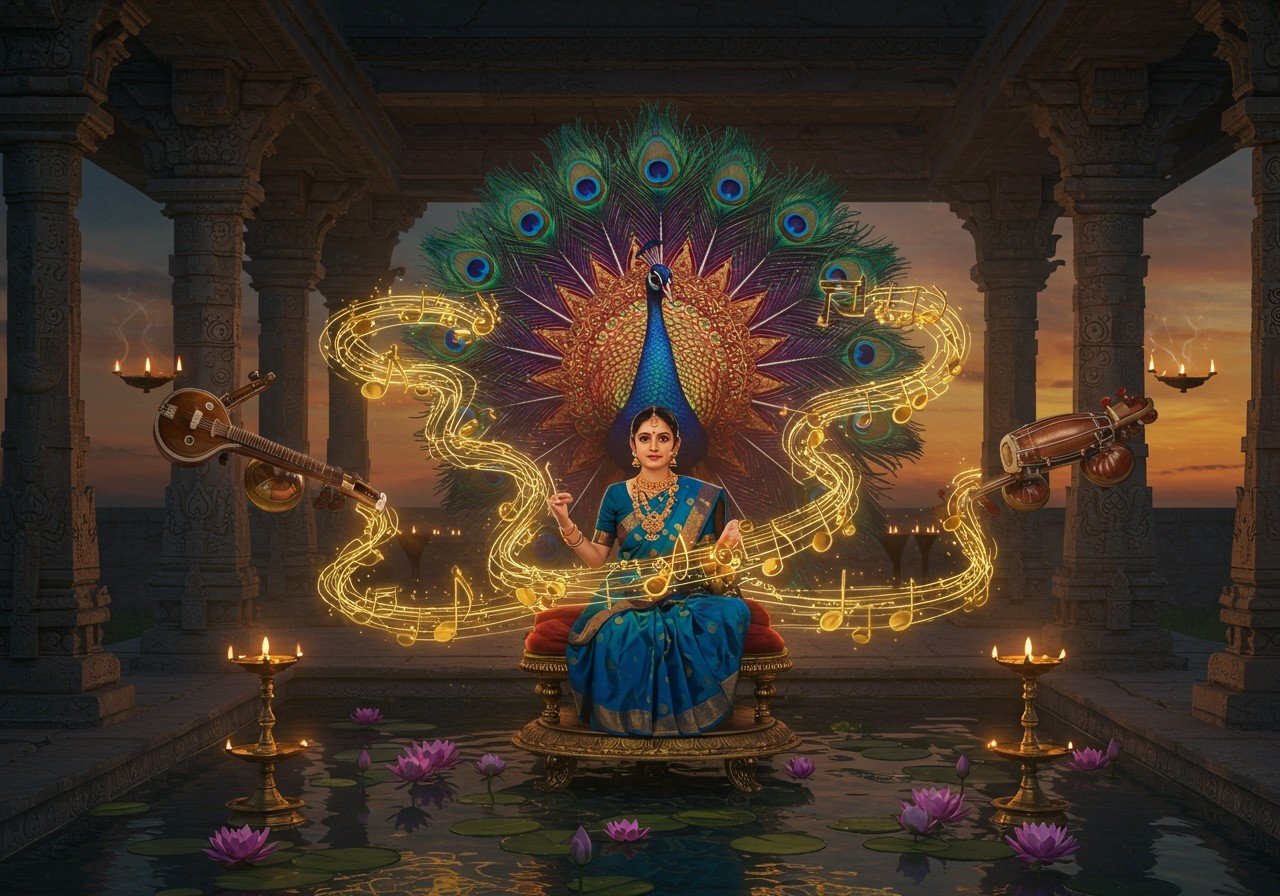
Carnatic music, a captivating classical tradition from South India, beckons you to explore its intricate melodies and rhythmic patterns. This guide is crafted especially for beginners, offering a gentle introduction to the world of Carnatic ragas.
Understanding the Essence of a Raga
A raga is more than just a scale; it’s a melodic framework, a blueprint for creating soulful music. It’s not just about the notes, but how those notes are woven together. Think of it as a melodic conversation, guided by specific rules for ascending (Arohana) and descending (Avarohana). Certain key phrases, known as Pakad, act like a raga’s signature, giving it a unique identity. And just as emotions color our conversations, each raga evokes a specific feeling, a rasa, that resonates deep within the listener.
Taking the First Steps in Learning Ragas
Starting your raga journey requires a solid foundation. Begin by mastering shruti (pitch) and tala (rhythm) – the very pillars of Carnatic music. To strengthen your grasp of shruti, practice swara exercises diligently. Think of Sarali Varisais, Janta Varisais, and Dhaatu Varasais as your musical warm-ups, building your musical muscles. And just as aspiring writers learn from literary masters, immerse yourself in the music of experienced Carnatic musicians. Their renditions offer profound insights into the heart and soul of each raga.
Beginner-Friendly Ragas to Begin Your Exploration
Certain ragas are particularly welcoming to newcomers, offering a balance of simplicity and depth:
- Malahari: Often the first raga learned, offering a gentle entry point.
- Hamsadhwani: Known for its bright and auspicious feel, this pentatonic raga (using only five notes) is instantly captivating. Poojn.in offers a beautiful clay doat, perfect for Saraswati Puja, the goddess of music and knowledge.
- Mohanam: Another catchy and pleasing pentatonic raga, offering a sweet melody that’s easy to grasp. You can enhance your puja experience with high-quality Jaifal (nutmeg) available at Poojn.in, adding a traditional touch to your offerings.
- Kalyani: A versatile and rich raga, equivalent to Raga Yaman in Hindustani music, known for its depth and expressiveness.
- Shankarabharanam: Similar to the Western major scale, this raga is joyful and expansive, offering a sense of grandeur. Poojn.in offers Sarbosadhi, a collection of essential herbs used in various rituals, allowing you to maintain the sanctity of your traditions.
- Saveri:
- Hindolam:
- Abhogi:
These ragas provide a delightful introduction to the complexities of Carnatic music, setting the stage for further exploration.
Essential Elements for Understanding Ragas
Delving deeper into ragas requires a grasp of these key elements:
- Arohana and Avarohana: The ascending and descending scales that form the backbone of a raga, defining its melodic contours.
- Swaras: The fundamental notes – Sa, Ri, Ga, Ma, Pa, Da, Ni – the building blocks of every raga.
- Tala: The rhythmic cycles that provide the heartbeat of Carnatic music, adding structure and dynamism. To deepen your understanding of sacred symbols, explore our insightful blog post on Rudraksha and Tulsi.
- Shruti: The precise pitch that binds everything together, ensuring harmony and resonance. For those interested in learning more about rituals and ceremonies, our beginner’s guide to Yantras and Yagyas offers valuable insights.
Embrace these elements with respect and dedication, and you’ll forge a deep connection with the rich traditions of South Indian classical music. Discover Mahosadhi at Poojn.in, a powerful combination of herbs used in special pujas and rituals, adding authenticity to your spiritual practices.
Frequently Asked Questions about Carnatic Ragas
What exactly defines a raga in Carnatic music? A raga isn’t just a scale; it’s a melodic framework with specific rules for ascending and descending, creating a unique emotional atmosphere. It’s a system that guides improvisation and composition, giving each piece its distinctive character.
How many Melakarta ragas exist in Carnatic music? The Melakarta system categorizes 72 parent ragas, each a complete scale of seven notes. These serve as the foundation for countless other ragas, known as janya ragas.
Could you name some popular ragas for a beginner to explore? Certainly! Malahari, Hamsadhwani, Mohanam, Kalyani, and Shankarabharanam are excellent starting points. Each offers a unique melodic flavor and emotional depth, providing a glimpse into the vast world of Carnatic music. Poojn.in offers Green Mung Dal, a staple in many Indian rituals, ensuring you have the finest ingredients for your ceremonies.
What’s the significance of Melakarta ragas in Carnatic music? Melakarta ragas are essential as they provide the complete set of seven notes from which other ragas are derived. They are the parent scales, offering a framework for understanding the relationships between different ragas.
Are there online resources for learning Carnatic ragas? Absolutely! Numerous online platforms and teachers offer lessons and resources for learning Carnatic music, making it accessible to learners worldwide. You can find video lessons, exercises, and performances to guide your journey. For spiritual guidance, Poojn.in offers the Srimad Bhagavad Gita in Bengali, allowing you to connect with this timeless scripture in your own language.
Continuing Your Musical Journey
Embarking on this path is like stepping into a river of tradition, emotion, and artistic expression. Each raga is a universe waiting to be explored. Let patience and diligent practice be your companions. The effort you invest today will deepen your connection to this rich heritage tomorrow. Carnatic music isn’t just about learning notes and rhythms; it’s about feeling the music, understanding its soul, and sharing its beauty with the world.


